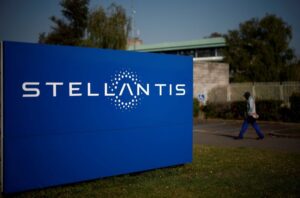Antonio Filosa has officially stepped into the role of chief executive at Stellantis. His appointment follows the departure of Carlos Tavares last December, marking a pivotal moment for one of the world’s leading automakers.
Filosa now faces significant challenges that could shape the future of Stellantis. Here’s a closer look at what he must address:
Regaining Market Share
Revitalizing sales is the immediate priority for Filosa. Stellantis, positioned as the fourth-largest automaker globally by sales, has seen a decline in market share in critical regions like the U.S. and Europe. Dealers have expressed concerns over rising prices that have placed vehicles out of reach for many consumers, especially under the previous leadership.
The company is contending with inventory issues, spurred by delayed model launches and a tepid demand for electric vehicles (EVs). As competition intensifies from Asian manufacturers, Stellantis must act swiftly to ensure that unsold vehicles do not become a liability that undermines financial health.
Transitioning to Electric Vehicles
The automotive landscape is shifting towards electrification, yet regulatory uncertainties abound. The prior U.S. administration’s attitude towards EVs has created a climate of unpredictability, and there’s speculation that Europe may follow suit, which could hinder the rapid transition to electric cars.
With a goal for all European passenger car sales to be electric by 2030 and a commitment to ensure half of its U.S. vehicle sales are electric by the same deadline, Stellantis is at a crossroads. The slowdown in EV sales growth necessitates a renewed emphasis on hybrid models as a strategic pivot, balancing eco-conscious goals with consumer affordability—an area in which Stellantis can excel if executed well.
Navigating U.S. Tariffs
Tariffs imposed during the previous administration have cast a shadow over Stellantis’s production strategies. Recent reports show that over 40% of the 1.2 million vehicles sold in the U.S. last year were imported from Mexico and Canada. Filosa’s administration will need to explore ways to increase U.S. manufacturing content to offset tariff impacts.
With assembly plants located in both countries, including the manufacture of Ram pickups and Jeep models, the potential for localizing production exists, but it requires a careful approach to maintain profitability while adhering to evolving regulations.
Optimizing the Brand Portfolio
One of the most daunting tasks for Filosa will be managing Stellantis’s diverse portfolio of brands, inherited from the 2021 merger of Fiat Chrysler and PSA. The volatile automotive landscape has led to discussions about potentially phasing out underperforming brands, with analysts highlighting premium labels like Alfa Romeo, DS, and Lancia as particularly vulnerable.
Interestingly, brands like Dodge and Chrysler may have staying power, due to their strong connection with American consumers. This is a crucial insight for understanding which brands may be future pillars of the company.
Supplier Relations and Capacity Challenges
Rebuilding trust with suppliers is crucial in the current market post-Tavares, where cost-cutting measures may have strained relationships. The existing pressures on suppliers, stemming from reduced demand and slim margins, will require careful navigation from the new leadership.
Like many legacy automakers, Stellantis is grappling with excess production capacity, especially in Europe, where estimates suggest utilization rates sit between 50% and 60%. Strategies for managing this capacity issue, similar to those implemented by competitors, will be key. However, any moves to streamline operations will likely evoke reactions from governments and labor unions.
Confronting Challenges from China
Stellantis’s low presence in China stands in stark contrast to the increasing market share of Chinese competitors, particularly in the EV sector. The automaker’s partnership with Leapmotor signifies a promising direction, allowing Stellantis to access competitively priced EVs for the European market.
This joint venture exemplifies the type of innovative collaborations needed to ensure Stellantis remains relevant in an increasingly competitive field dominated by the likes of Tesla and their Chinese counterparts.
As Filosa embarks on this new journey at the helm of Stellantis, the challenges are significant but not insurmountable. With strategic decision-making and a focus on sustainability, the future can be bright as the company adapts to this rapidly evolving automotive landscape.

